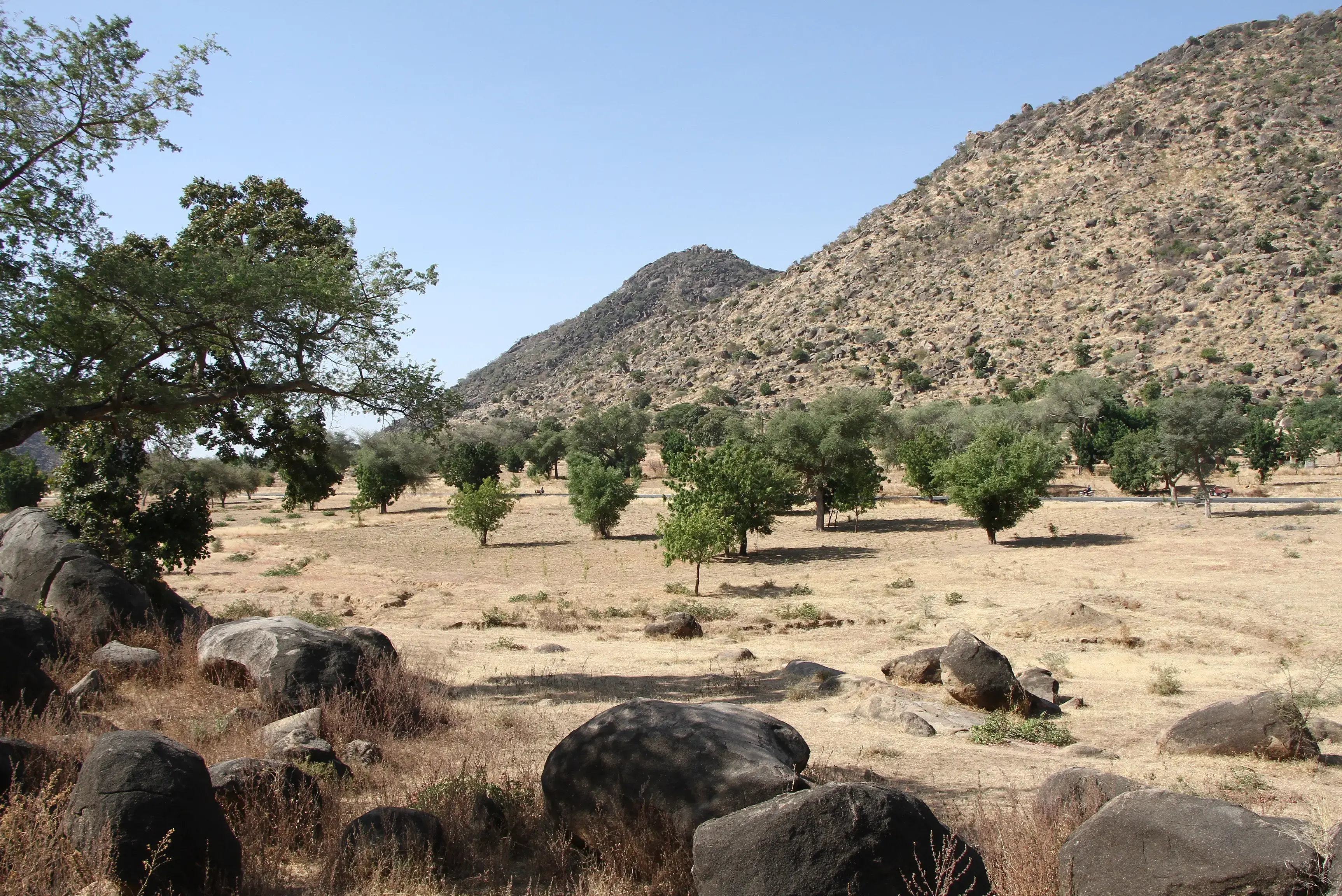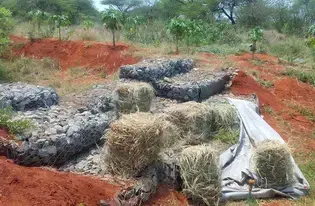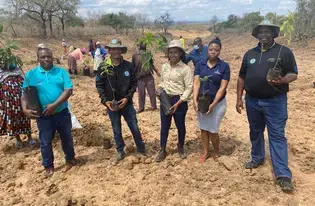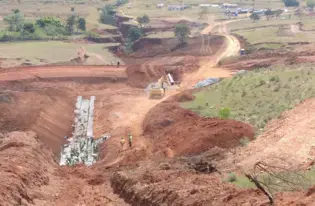The hilly landscape of Northern Maroua, Cameroon was once rich with tall trees and green fields. With sufficient rain, local farmers enjoyed consistent crop yields and herders grazed their healthy livestock. But in the last two decades, demand has increased for farmland, pasture, and firewood for cooking at the expense of forests and grasslands.
Every time a tree is cut down (or a sapling is eaten by hungry goats and cattle), less water is available, crop yields decline, and climate change accelerates. When the rains do come, water rushes across the bare soil, sweeping away homes, crops, and livestock and turning dry riverbeds (known as mayo) into treacherous gullies.
With fewer trees dotting this arid landscape, people across Cameroon’s Far North – the region where Northern Maroua is located – are struggling. There, more than 400,000 ha of land are degraded, spelling trouble for the 84% of the population that are farmers and herders and that rely on healthy land for their livelihoods.

Dry riverbeds dot Northern Maroua. The lack of water threatens the livelihoods of local residents. Credit: Eyong Blaise/WRI
Some local champions, however, have decided to stay and work to restore that damaged land by growing trees, revitalizing grasslands, and halting erosion in its tracks. After the Government of Cameroon started work on 60 sites in 2008, hundreds of people have worked together to start restoring a total of 2,600 hectares.
How are they doing it? These local champions are working to plan, scale up, and monitor their work with the support of the Ministry of Forestry and Wildlife, the Ministry of the Environment, World Resources Institute (WRI), GIZ-PFE, and EcoConsult. That team is helping Northern Maroua’s communities achieve the goals that they themselves determined through an inclusive process: control erosion and regulate water flows, reforest steep areas, rehabilitate the soil's fertility with agroforestry, start using improved cookstoves, and help farmers and herders more effectively share the land.
By growing trees on and near their farms in agroforestry systems, building ditches and stone walls to keep soil in place during heavy rains, and planting saplings, these champions have improved the quality of the water and the soil. Who are these people?
During the two-to-three-month rainy season, volunteers plant trees, while women elders like Fadimatou Odette work to collect and sow native seeds. Young people are also playing a major role. Bimindif Jonas, a youth leader in the region, is working with his peers to control erosion with stone embankments and protect baby saplings from roaming goats.
In Mogazang village, young members of the community like Vorom Dedeo have planted neem, cashew, and acacia trees to protect the watershed and stabilize the eroded hillsides. Neem trees, which communities are growing in nurseries, are especially valuable assets that produce an oil widely used in cosmetics and that serves as a natural pesticide.

Bimindif Jonas caring for a sapling. Credit: Eyong Blaise/WRI
Traditional authorities are also playing a big role. The Djaoro Goudiba Djima from Kossewa village has let trees grow on his parcel of land and on the mountains to help maintain soil fertility. He also is building stone embankments to fight erosion. The Djaoro Sali Watchahaï from Gayak village has fenced off a portion of his land on the side of a hill to create a stand of Acacia nilotica trees, which can be used for cooking and construction. According to him, his trees are also preventing erosion in the rainy season by holding the soil in place.
Healthy land and clean water also mean higher yields of sorghum and millet, the region’s staple crops, as well as more productive cotton farms, an important cash crop. In Tchéré village, the government-led Société de Développement du Coton (SODECOTON) is helping smallholder farmers like Ousman Dandi produce cotton sustainably by encouraging them to intersperse this profitable commodity with more than 30,000 Faidherbia albida trees across 250 ha. Those trees are helping replenish the nutrients that cotton takes from the soil, protecting this key industry’s long-term viability.

Ousman Dandi’s lands, where he planted Acacia Senegal and Faidherbia Albida trees on 15ha. Credit: Arnaud Ngoumtsa/GIZ
To meet demand for wood for feeding traditional cooking stoves, communities are planting woodlots of fast-growing trees to lighten the demand on the existing stock. Encouraging farmers to selectively harvest branches from trees, instead of chopping them down entirely, and to adopt clean cookstoves that use less fuel can preserve these critical resources for decades.
By mapping how people use the land and selecting priority areas for restoration with local communities, GIZ-PFE, WRI, and EcoConsult are also helping these champions (and the government) identify which areas of land should be restored first. They are also co-creating watershed management plans and convening local government officials to develop comprehensive policies and programs. The resulting landscape action plan will accelerate restoration – and keep the land restored.
While Northern Maroua’s restoration movement is far from complete, more and more people are recognizing the benefits that healthy, regreened landscapes can have on their communities.
To learn more about work to restore Northern Maroua, see this two-pager.







